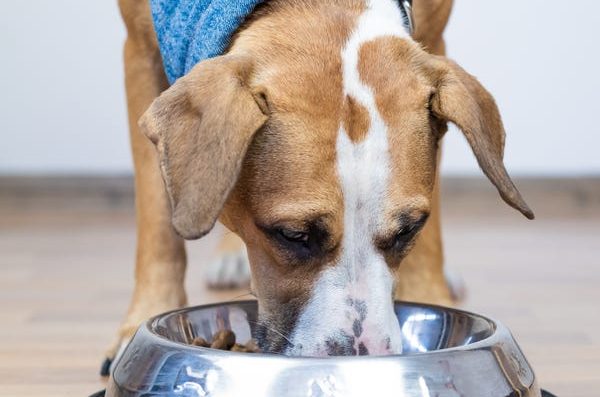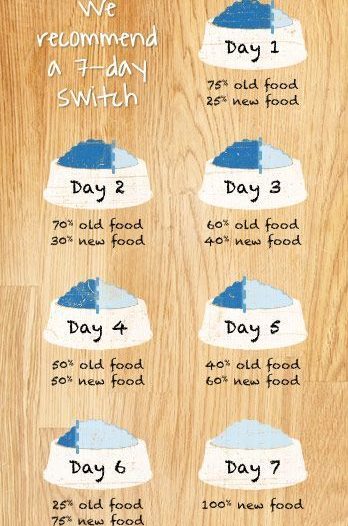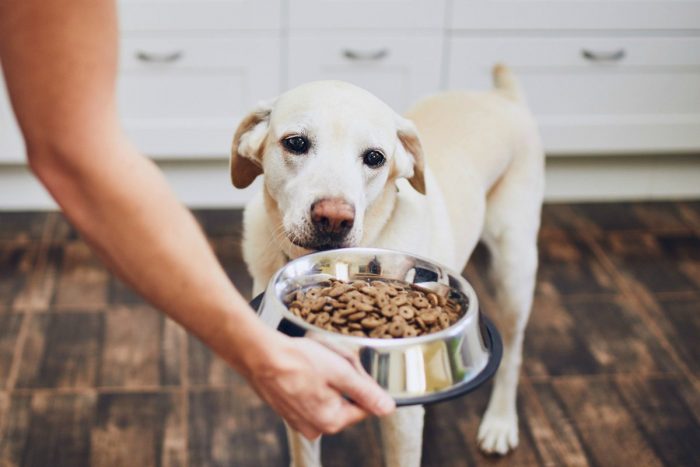All living things need food to grow, develop, and stay alive, and as food is of great importance to human development and sustenance, so it is to household pets like dogs. The quality and suitability of food fed to your dog will determine if it will develop to its full potential and enjoy a life of good health and vitality or not.
Additionally, at some point in the course of its life, you may need to change your dog’s food to a more appropriate one; In this piece, we are poised to explore the when, how, and the side effects of changing the diet of your canine friend. Read on to get the full details.
Table of Contents
When To Change Your Dog’s Food
The food that your pet eats has a direct impact on the physical condition and quality of life that it would enjoy. When you feed your furball with top-quality food, you will end up with a “happy and healthy dog”. However, a dog that is placed on a bad or mismatched diet will help you run up a significant VET bill. Besides, you run the risk of losing your beloved canine companion. Below are the top 5 signs that indicate that it is time to change your dog’s food.
After An Illness Or Surgery
If your dog has just recovered from a major illness or undergone any corrective surgery, it may be a good time to change its food and diet either temporarily or permanently. At this time, it may turn out that your furbaby won’t show interest in certain foods it has been gladly taking in the past and it’s best to change its food to one that has a lot of antioxidants or immune-boosting supplements in it. This will help the dog in its recovery process.

Changes In The Dog’s Coat Or Skin
Another signal that can indicate that it is time to change your dog’s food is from the coat. As soon as you begin to notice that your dog’s coat is dull or that its skin is flaky, it is time to get it to the VET and one of the major causes of this may be because of its diet. If the food that you are giving to your dog lacks the essential nutrients and supplements needed for its overall growth and development at that point in its life, then it is time for a change and the state of its coat and skin easily give away the cause of this challenge.
Read Also: How To Treat A Cat Abscess
Age Of The Dog
Age plays a big role in the canine diet, just like their human owners, dogs start off as babies (puppies) and grow to adult maturity before getting to the end of their lives and each of these stages requires different food formulations and supplements needs. The type of food a dog is fed at its puppy stage will differ from what it gets during middle age; the nutritional requirement is expected to change with old age. Puppies below a year old require puppy food, this would gradually give way to adult food from 18 months of life, and it would be recommended to change it again from its 5th to 7th year (depending on the size and breed) to maintain food for older dogs.
Frequent Bowel Movement
Once you begin to notice a change in the bowel movements of your dog, it may be a result of gastrointestinal disturbances or some other health issues. One of the first things to check would be the food being fed to the dog. If the diet is the problem, then you must change your dog’s food as soon as possible.
Ageing Or In Senior Years
As dogs get older and advance more towards their twilight years, they can begin to react to food that they have probably consumed all their life and up to that point. Various dog breeds and different sizes develop different health complications at different stages in their lifetime – particularly in their senior years, thus, they require a change in diet to foods that can help maintain their joints, metabolism, fur coats, and others. This is the best time to change your dog’s food to those that have high fiber content, lower calories, and supplements that support aging/senior dogs. These foods make aging easier as their digestive tract has altered significantly.
How To Change Dog Food

Changing your dog’s food is not just a straight swap action; you have to do it gradually while monitoring your dog to see if there would be any allergic reactions during the process. The food change process may take up to seven days if all goes well and your dog accepts the new food with no issues. On the other hand, it may take longer for dogs that have allergic reactions to a diet.
You start from the 1st to 2nd day by mixing 25% of the new food with 75% of the old food. From the 3rd to the 4th day, you can make an equal mix of both foods (that is, 50% each). From the 5th to 6th day, mix 75% of the new food with 25% of the old food. From the 7th day, you can give your dog the new food 100%, and watch out for any reactions from your dog throughout this process. This procedure has been effective in confusing many dogs, and they just accept the food as if it is the old one.
Apparently, drastically switching your dog’s diet to a new one without taking precautions can lead to health challenges or the dog might just reject the food since it can immediately dictate the difference.
Read Also: Dog Paw Care Tips: How to Take Care of Your Dog’s Paw Pads
Changing dog food side effects
When you change your dog’s food, things may not always go as planned and it may be accompanied by some side effects such as food allergic reaction and intolerance or gastrointestinal disturbances. Reactions to the food change may present themselves as cutaneous symptoms such as hair loss, itching, skin rashes, or skin inflammation. Gastrointestinal issues may include loss of appetite, diarrhea, nausea, and vomiting.
The quality of your dog’s stool may also change and if it goes beyond the normal variations, it is better to seek professional help from your vet and get your dog back to its normal state again. An animal nutritionist may also be helpful in such situations.
